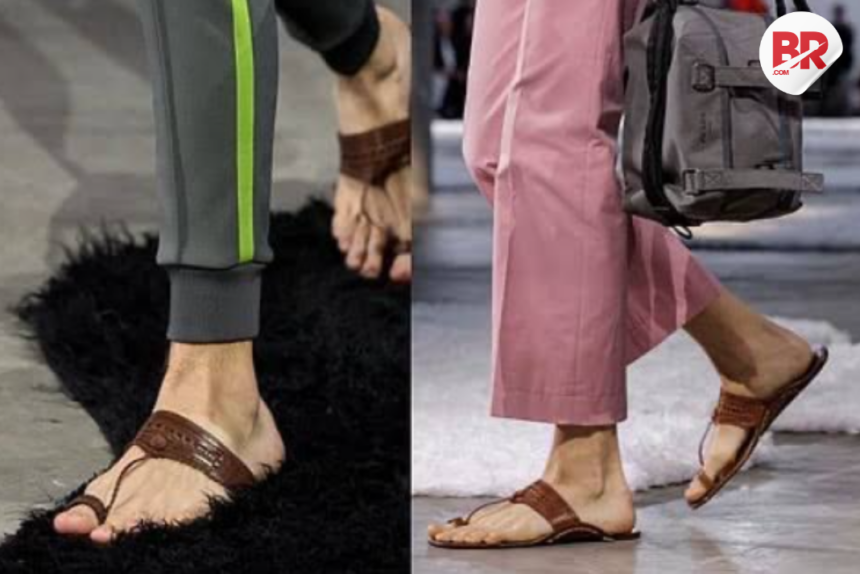
When Italian luxury brand Prada showcased leather sandals at Milan Fashion Week, no one expected a courtroom drama in India. But as it turns out, those sandals weren’t just any flats. They looked a lot like Kolhapuri chappals—the traditional handmade footwear from Maharashtra, priced in local markets for just a few hundred rupees.
Here’s the twist: Prada’s version costs around Rs 1.2 lakh.

Prada rips off indian kohlapuri sandals without giving any credits to india. at the time, when anti indian racism is at an all-time high. pic.twitter.com/aOKukp25Ri
— Indian Aesthetics (@IndianAesthetik) June 26, 2025
Now, that fashion statement is under fire.
What’s the Problem?
A Public Interest Litigation (PIL) was filed in the Bombay High Court by Ganesh Hingmire, a well-known intellectual property advocate. He claims Prada copied the Kolhapuri chappal design without crediting or compensating Indian artisans.
The chappals, officially recognised under Geographical Indication (GI) status since 2019, are more than just footwear. They are part of Maharashtra’s cultural identity.
The petition says Prada only admitted to being “inspired by Indian artisans” after social media outrage. But that apology was private—and too little, too late.
What Are Indians Demanding?
Hingmire is asking for more than just an apology. He wants:
- Monetary compensation for Indian artisans
- A formal apology to the Indian public
- A court-supervised collaboration between Prada and artisan groups
- A co-branding and revenue-sharing model that includes the people who’ve been making Kolhapuris for generations
He argues that expecting poor, rural artisans to fight international fashion houses alone is unfair. India needs legal systems that protect local craftsmanship on the global stage.
Politicians Speak Up
Priyank Kharge, a minister from Karnataka, also weighed in. He reminded everyone that many artisans who make these chappals live in small towns like Athani, Nippani, and Kolhapur.
“These artisans don’t just deserve credit. They deserve better pay, global exposure, and respect for their work,” he said.
The Bigger Picture
This isn’t just about chappals. Similar issues have come up with Dior, which used traditional Lucknowi mukaish embroidery without crediting Indian artists. Global fashion often pulls from Indian heritage, but rarely gives back.
It raises a simple but serious question:
When Indian culture goes global, who profits—and who’s left behind?
Legal View: Not So Simple
Some legal experts say that this may not be a strong GI infringement case. Senior lawyer Ameet Naik believes a case of “passing off” could be explored, but it won’t be easy to win.
Still, public pressure is growing. And for many Indians, this is about more than laws. It’s about respect, recognition, and restoring dignity to traditional Indian crafts.
For too long, global brands have taken Indian designs and turned them into luxury statements—without sharing the credit, the profits, or the story.
This Prada case might just change that.
Because this time, India isn’t walking away quietly.












